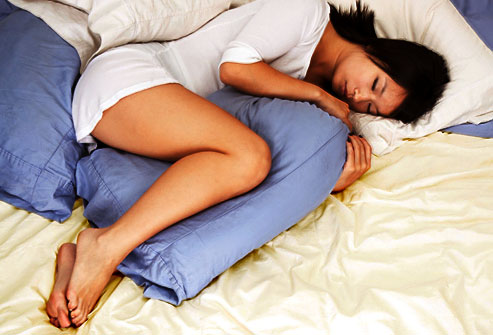How many nights have you spent often brought on by strain from bad posture, tossing and turning with back pain trying every position possible to get comfortable and getting up the next morning feeling more exhausted than when you went to bed?
Worse still, you spend the next day feeling irritable and weary, only to repeat the cycle all over again the next night? Well, it’s something that one in three of us experience at some point in our life.
And as if dealing with back pain during the day isn’t hard enough, this pain often tends to increase in intensity through the night, meaning the resulting lack of sleep not only impacts on your ability to function the following day, but can also cause anxiety and lead to depression.
The chronic back pain cycle is relentless, it takes more of a toll on our emotional state than most of us appreciate, and sleeplessness plays a pivotal role in that downward spiral.
What’s interesting however, is that most back pain isn’t caused by serious medical conditions like cancer or arthritis. Instead, it’s often brought on by strain from bad posture, awkward sleeping positions, stress and other lifestyle habits like poor nutrition, alcohol consumption and weight gain, to name just a few.
Here are 6 strategies that you can use to help you banish those sleepless nights for good, and allow you to wake up feeling refreshed and ready for action.
1 ADOPT THE RIGHT SLEEPING POSITION
Many people find that lying on their back is the most comfortable position for back pain. Place a pillow under your knees and keep your spine neutral. The pillow is important — it works to keep that curve in your lower back.
How does this position help? When you sleep on your back, your weight is evenly distributed and spread across the widest area of your body. There is less strain on your pressure points and you can achieve better alignment of your spine.
If you don’t find that comfortable then try sleeping on your side and use a pillow between your knees to adjust your body position and improve the alignment of your spine. If you roll onto your back once you’ve fallen asleep on your side, and this causes pain, tuck a pillow behind your back to prevent you from rolling backwards.

Try and avoid sleeping on the same side all the time as this can lead to muscle imbalances and increased pain, try and make sure to sleep on both sides equally.
How does this position help? Sleeping on your side alone won’t make you feel better. It’s using the pillow between your knees that’s the trick. The pillow will keep your hips, pelvis, and spine in better alignment.
If you have a herniated disc then the fetal position is likely to be the most comfortable position to sleep in. Tuck your knees toward your chest and gently curl your torso toward your knees and remember to switch sides from time to time to prevent any imbalances.
How does this position help? Your discs are soft cushions between the vertebrae in your spine. Herniation happens when part of the disc pushes out of its normal space, causing nerve pain and weakness. When you curl your torso into a fetal position, you open the space between the vertebrae which may relieve pressure or squashing of the disc.
Remember: Alignment is key.
Regardless of the position you choose to sleep in, keeping good alignment of your spine is vital. That means ensuring your ear, shoulder and hips are in a straight line with each other. If there are airy gaps between your body and the mattress where your body could sag and strain muscles of the spine, use a pillow to fill the gap and support your spine.
2 PICK THE RIGHT PILLOW
Your pillow should cradle your head and neck and help to support the upper portion of your spine. If you sleep on your back your pillow should completely fill the space between your neck and the mattress, from the base of your skull to the top of your shoulders. If your pillow tilts your head down (eg. double chin) then it is too high or thick, and if your head tilts backwards then your pillow is too flat or thin.
Similarly, if you sleep on your side the pillow must come down to touch the top of your shoulder so your entire neck is supported on the pillow. Again, if the pillow is too thick or thin you will have your head tilting to the side. It is important that when sleeping on your side, that your spine mimics a straight line (table top) from the base of your skull to your bottom.
Back sleepers: You may do best with thinner pillows or with pillows that have extra padding in the bottom to support the neck. Memory foam is a good material that molds specifically to your own neck. A water pillow is another option that gives firm, all- over support.
Stomach sleepers: You should aim to use the thinnest pillow possible or no pillow at all. In fact, if you like sleeping on your stomach, you may try sleeping on your side while holding a body pillow. The body pillow will give you the feeling of something against your stomach while helping to align the rest of your body.
Side sleepers:You may want to look for a firm pillow. Better yet, try to find one that has an extra-wide gusset that will help with the space between your ear and shoulder. And don’t forget to place a firm pillow between your knees.
3 YOUR MATTRESS MATTERS
Traditionally doctors recommended a firm mattress for people with back pain, however a recent survey showed that extremely firm mattresses gave the poorest sleep. That said, a very soft mattress gives little support and allows bad alignment of your spine. Ideally a mattress shouldn’t be more than 10 years old, so if you’re choosing a new one, try a medium or medium to firm mattress where possible. A memory foam mattress topper may also be beneficial. Some retailers will allow a 30-day trial which may be a good option to test your back on.
If you are unable to purchase a new mattress now, you can try to firm up an existing mattress by placing an inexpensive plywood board under it. Or you could soften a hard mattress by using a memory foam topper. You could even place your mattress on the floor to see if lessening the movement of the springs helps with your pain.
4 STAGE YOUR SLEEP SCHEDULE
Set the stage for a good night’s rest by following these tips:
- Go to sleep and wake up at the same time every day, even on the weekends. This conditions your body to expect sleep at a set time and may help you get into a rhythm where sleep comes more easily. Try and avoid daytime napping if you have trouble sleeping at night.
- Create an ideal sleep environment. Being comfortable will help your body give in to sleep. Make sure your bedroom is cool, dark, and quiet. Earplugs or a white-noise machine can help drown out distractions or you could play some calming music or nature sounds. Try to limit the number of pets or children sleeping in your bed, and avoid falling asleep with the television on, even if the sound is off.
- Power down your devices. Computer and phone screens emit what is called blue light. At night this kind of light can disrupt your body’s natural circadian rhythm and disrupt sleep. Limit your exposure to these devices including video games, iPads, TV and phones in the last 2 hours before bed.
- Mind your lifestyle habits. Taking care of yourself during your waking hours will help your sleep. Think about the food and drink that you consume. Caffeine may wind you up if consumed too close to bedtime. Alcohol can make you sleepy initially but then acts as a stimulant a few hours later, making your quality of sleep worse. Herbal tea or warm milk are better substitutes. Exercise is good for your body, but doing strenuous or vigorous exercises right before bed may disrupt your sleep.
5 PAIN RELIEF BEFORE BED
Before getting into bed do some gentle stretches prescribed by your therapist. The use of an ice pack or a heating pad may help reduce pain prior to bedtime. Relaxation techniques including deep breathing and body contract- relax techniques may help settle you before bed – again a physical or manual therapist can offer advice.
6 KEEP A SLEEP DIARY
If you have concerns about your sleep, write about them. Include anything and everything about your usual habits and routine so you can show your doctor should you need to. Be sure to jot down how long you sleep each night, how long it takes to fall asleep, if you nap during the day, and anything else related to your rest that you think may be important.
To find out more and see how we may be able to help, do check out the Putney Clinic’s Physiotherapy Services, contact us on 020 8789 3881 or by email at info@putneyclinic.co.uk to discuss your needs.

